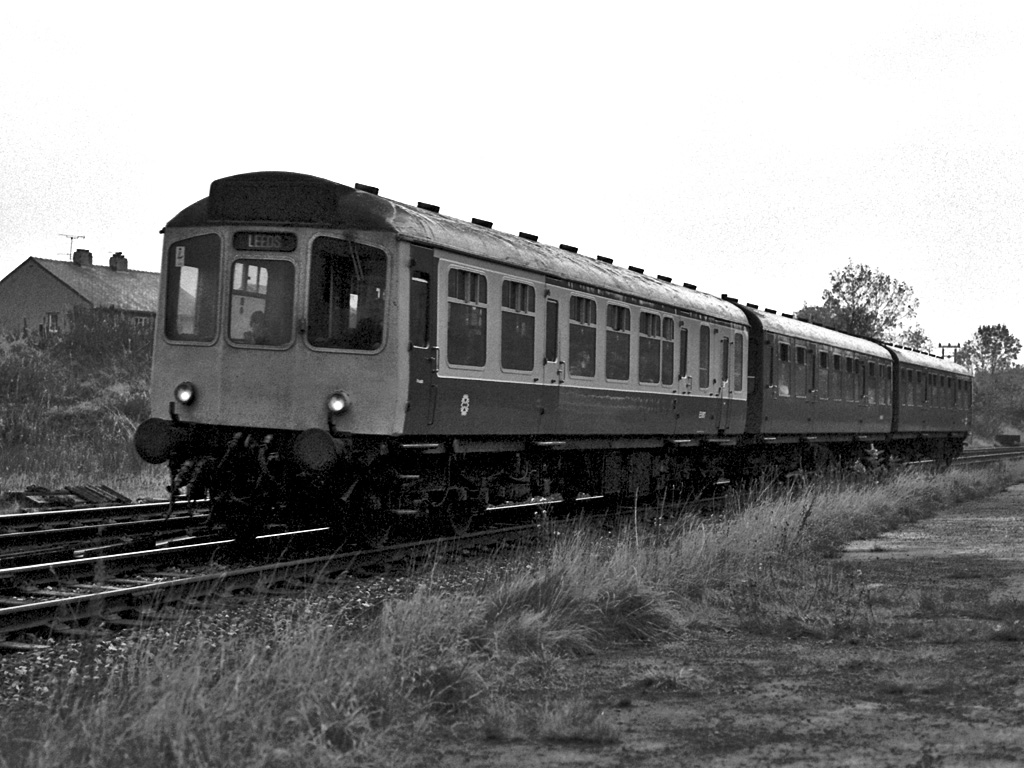- British Rail Class 110
Infobox DMU
name = British Rail Class 110
imagesize = 300px
background = #0033cc
caption =
Manufacturer = BRC&W
Operator =British Rail
Formation = Two and three car
Built =
LinesServed =
InService = 1961-
CarLength = 57 ft 6 in (17.53 m)
CarWidth = 9 ft 3 in (2.81 m)
CarHeight = 3.88 m
Weight = 33.5 tonnes
Capacity =
MaxSpeed = 70 mph (112 km/h)
Gauge =
Traction =
Engine =Rolls-Royce, 180 bhp
SafetySystem= |The Class 110 DMUs were built by the
Birmingham Railway Carriage and Wagon Company in conjunction with theDrewry Car Co. to operate services on the former Lancashire and Yorkshire main line, and spent their entire careers based around this same area. This earned them the name of the 'Calder Valley' sets. They were an updated version of the Class 104, with a revised cab design and raised bodyside window frames.Description
The arduous Calder Valley route meant they needed more power than most sets, so they were fitted with 180 hp Rolls-Royce engines, and when delivered they had the highest hp/ton of any of the DMUs, including the lightweights. With a set weighing 87½ tons (tare), this gave a power to weight ratio of 8.3 hp /
ton , which was appreciably higher than any other all-diesel sets in use at the time using normally-aspirated engines. Performance tests included a standing start against a ruling gradient of 1 in 261 and a set in tare condition achieved a speed of 30 mph in 45 seconds, 50 mph in 2 minutes 4 seconds, and 70 mph in 4 minutes 6 seconds. From a standing start on a 1 in 45 gradient a speed of 25 mph in third gear was reached in 42 seconds. Each set had 24 first class and 159 second class seats.Timeline
The first twenty sets, for the NER, were ordered in March 1959. The second batch were allocated to the LMR, in January 1961. Deliveries of the two batches was concurrent, starting in 1961, and these were the penultimate class of first generation sets to be built.
Other technical details
* Coupling Code: Blue Square
* Transmission: Standard mechanicalPreservation
Five vehicles are preserved:
* Lakeside & Haverthwaite Railway two-car set (52071 & 52077)
* Wensleydale Railway three-car set (51813, 51842 & 59701)References
*Motive Power Recognition: 3 DMUs. Colin J. Marsden
*British Railway Pictorial: First Generation DMUs. Kevin Robertson
*British Rail Fleet Survey 8: Diesel Multiple Units- The First Generation. Brian Haresnape
*A Pictorial Record of British Railways Diesel Multiple Units. Brian GoldingExternal links
* [http://www.railcar.co.uk/his110-119/110intro.htm History of the Class 110s]
Wikimedia Foundation. 2010.
